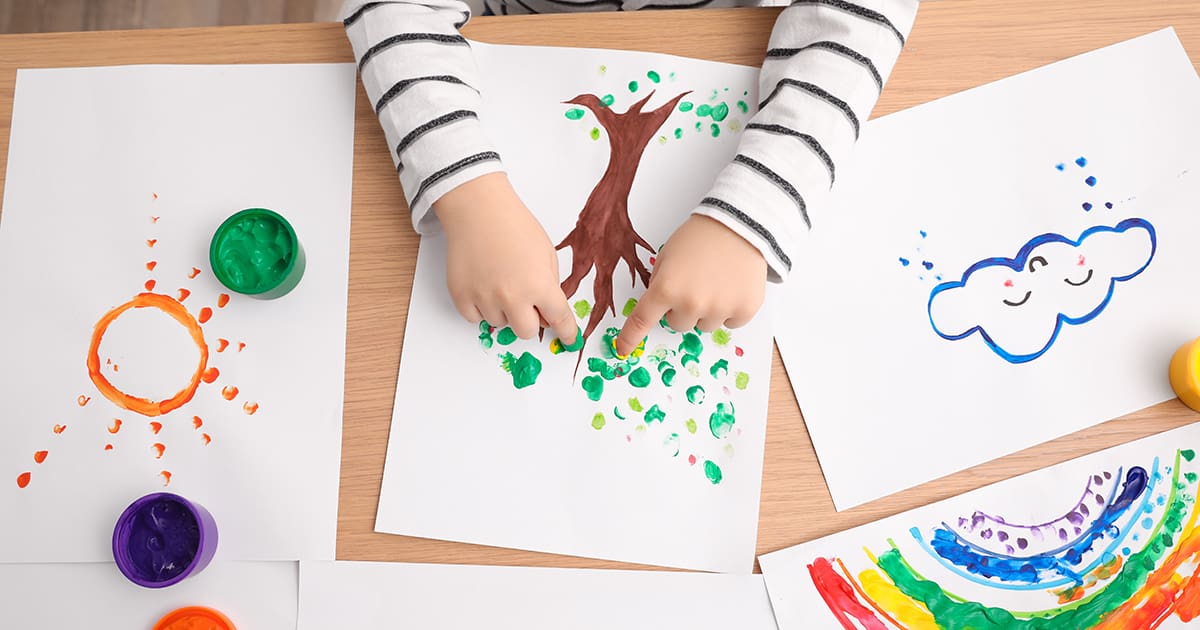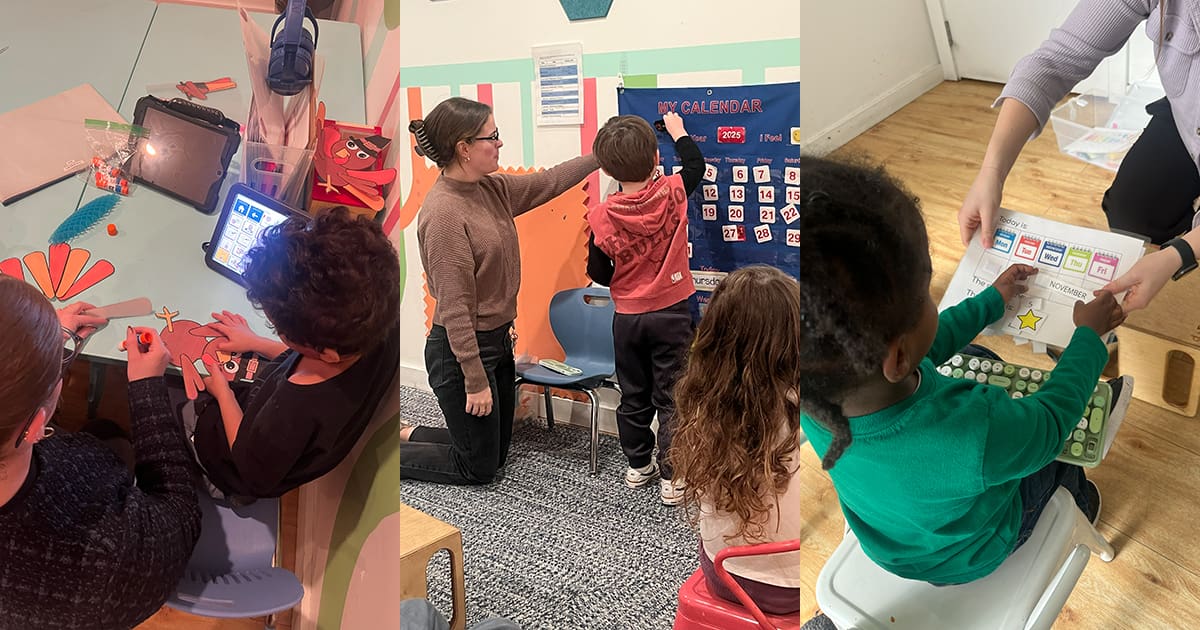Share this Post

Finger painting isn’t just a fun and colorful activity—it’s a powerful developmental tool that can help children grow in remarkable ways. In therapeutic preschool programs, this hands-on, creative experience serves as much more than play. It nurtures essential skills like sensory processing, fine motor development, emotional expression, and social interaction. At CST Academy, we embrace activities like finger painting to provide children with autism and developmental delays the opportunities they need to learn, explore, and thrive in a supportive environment.
The Developmental Power of Finger Painting
Finger painting is an engaging, sensory-rich activity that encourages children to explore textures, colors, and patterns while using their hands to create. Here’s how it benefits children in a therapeutic preschool setting:
1.Supports Sensory Integration
Many children with autism face challenges with sensory processing, such as hypersensitivity to textures or aversion to messy activities. Finger painting provides a safe, enjoyable way to expose children to different sensory experiences, helping them gradually build tolerance and improve their ability to process sensory input.
2.Enhances Fine Motor Skills
As children press their fingers into paint, manipulate it on paper, and experiment with different strokes, they strengthen the muscles in their hands and fingers. These skills are essential for tasks like writing, cutting, and self-care activities.
3.Fosters Creativity and Self-Expression
Finger painting is an open-ended activity where children can express their emotions, thoughts, and creativity without the pressure of structured tasks. For nonverbal children or those who struggle to articulate their feelings, it becomes a valuable outlet for communication.
4.Builds Hand-Eye Coordination
The process of dipping fingers in paint and directing movements on a canvas helps children improve hand-eye coordination. This foundational skill supports a variety of everyday tasks, from tying shoes to catching a ball.
5.Promotes Emotional Regulation
Finger painting can have a calming effect on children. The tactile experience and repetitive motions of spreading paint can help reduce anxiety, improve focus, and promote relaxation.
6.Encourages Social Interaction
In a therapeutic preschool environment, finger painting often takes place in a group setting. This provides children with opportunities to practice sharing materials, take turns, and celebrate each other’s creations, fostering important social skills.
How CST Academy Incorporates Finger Painting into Therapy
At CST Academy, we understand the value of play-based activities like finger painting in fostering a child’s development. Here’s how we incorporate this creative activity into our therapeutic preschool programs:
Sensory-Friendly Approach
We carefully adapt finger painting activities to meet each child’s sensory preferences. For children who are hesitant about messy play, we introduce alternative options, such as using gloves or tools, to build comfort over time.
Tailored to Developmental Goals
Our expert therapists design finger painting sessions to align with each child’s individual therapy goals. Whether focusing on fine motor skills, sensory processing, or emotional expression, the activity is customized to maximize developmental benefits.
Group and Individual Settings
Finger painting is used in both one-on-one therapy sessions and group activities. In group settings, children learn to collaborate and engage with peers, while individualized sessions provide focused support for specific needs.
Encouraging Confidence Through Mastery
By providing positive reinforcement and celebrating every child’s efforts, we help build their confidence and willingness to try new activities.
Parent Collaboration
We believe therapy extends beyond the classroom. Our team provides parents with tips and ideas for incorporating finger painting at home, creating opportunities to reinforce skills and strengthen the parent-child bond.
Finger Painting Activities to Try at Home
Parents can continue the benefits of finger painting outside of therapy by setting up simple, engaging activities at home. Here are some ideas to get started:
- Color Mixing Experiment: Encourage your child to mix two colors together and observe the result. This fosters curiosity and an understanding of cause and effect.
- Texture Exploration: Add materials like sand, glitter, or rice to the paint for a unique sensory experience.
- Storytelling Through Art: Ask your child to create a picture that tells a story, such as a sunny day at the park or their favorite animal.
- Handprint Art: Help your child create handprint-based art, like flowers, trees, or animals, to explore patterns and shapes.
- Outdoor Finger Painting: Take the activity outside to reduce mess and let your child connect with nature while they paint.
Real Results: The Impact of Finger Painting
At CST Academy, we’ve seen firsthand how finger painting can transform a child’s development. Parents often share stories of their child discovering a new love for art, showing improved motor skills, or expressing emotions more freely through painting. One parent shared, “Finger painting at CST Academy was a breakthrough moment for my child. It not only helped with their sensory challenges but also gave them a way to communicate feelings we didn’t even know they had.”
Why Choose CST Academy?
CST Academy is dedicated to providing children with autism and developmental delays the tools they need to succeed in every area of life. Our therapeutic preschool programs integrate evidence-based strategies with creative, play-based activities like finger painting to support well-rounded development. With a compassionate team, individualized care plans, and a nurturing environment, we’re here to help every child thrive.
Take the Next Step
Finger painting is just one of the many ways CST Academy helps children learn, grow, and express themselves. If you’re ready to explore how our programs can support your child, contact us today to schedule a consultation. Together, we’ll unlock your child’s potential and create a brighter future.
Discover Our Pediatric Therapy & Autism Care
ABA Therapy
Support for children with autism.
Autism Evaluation
Expert assessments to identify child needs.
Pediatric Therapy Services
Speech, Occupational, Feeding, and Physical Therapy.
Therapeutic Preschool
A classroom environment designed for early learners with unique needs.

The Power of Finger Painting in CST Academy’s Therapeutic Preschool
Using Creative Expression to Support Sensory and Developmental Growth
Finger painting in therapeutic preschool settings offers more than just artistic fun—it supports sensory exploration, fine motor skills, and emotional expression. At CST Academy, our therapeutic preschool integrates finger painting into daily routines to help children engage through touch, color, and creativity. These activities foster confidence, encourage self-expression, and promote meaningful developmental progress in a playful, supportive environment.

Find the Best Care for Your Child




